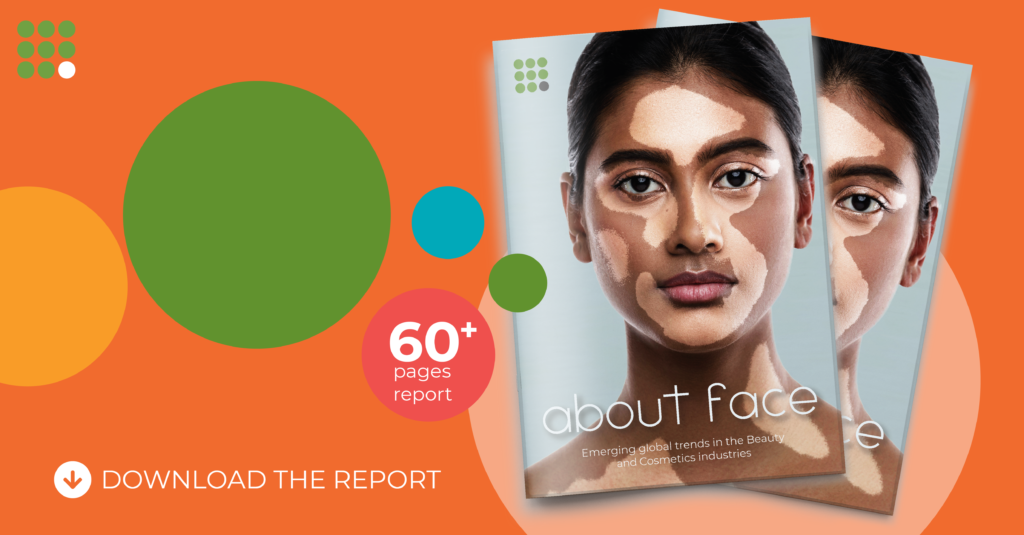Surveys are the cornerstone of market research. They offer unmatched insights into consumer behaviour and market trends when executed correctly. But designing a survey that keeps respondents engaged and provides valid results is no small feat. In fact, with attention spans reportedly dropping to just 8 seconds, the task has become even more challenging and critical.
The Importance of Survey Design
Understanding the Target Audience
In the age of personalisation, understanding your target audience is paramount to effective survey design. Before crafting the first question, you must have a profound understanding of who you’re speaking to. Are they tech-savvy millennials or brand-loyal baby boomers? What are their pain points, preferences, and behaviours? Answering these questions allows you to tailor the survey to resonate with your audience and yield more relevant insights.
Consider segmenting your audience based on various demographic and psychographic factors, and if possible, leverage AI-driven algorithms to provide a more personalised survey experience. Keep in mind that the same question might need to be framed differently for different audience segments to ensure clarity and relevance.
Aligning with Business Objectives
Surveys are not standalone tools; they must align seamlessly with the overarching business and research objectives. Whether you aim to launch a new product, understand brand perception, or tap into emerging markets, your survey must be a strategic extension of these goals.
Start by defining clear and specific objectives for your survey. What exactly do you want to find out, and why? Once the purpose is crystal clear, every question in your survey should serve that purpose, eliminating unnecessary or redundant queries.
Consider using advanced statistical models to ensure the questions and answer options are statistically relevant to the research goals. Leveraging expert consultation during this phase can further refine the alignment and ensure that the survey truly serves as a compass pointing toward the business goals.
Surveys remain a vital tool in the modern marketer’s arsenal, but their design must evolve with the times. You can transform a basic data collection tool into a strategic asset by deeply understanding your target audience and aligning your survey meticulously with business objectives.
Increasing Engagement and Completion Rates
Personalisation
In a world where consumers increasingly expect tailored experiences, personalisation is key. Using respondent data such as past purchase history, geographical location, or browsing behaviour, you can create a survey experience that speaks directly to the individual. This approach increases engagement and often leads to more honest and insightful responses.
Tools such as logic branching, where questions are dynamically generated based on previous answers, can create a more conversational and relevant experience for the respondent. Remember, a survey that feels like a dialogue rather than an interrogation will likely foster better engagement.
Gamification
Injecting game-like elements into your surveys can transform the often mundane task of answering questions into an enjoyable experience. By introducing challenges, rewards, or even simple visual enhancements, you can increase your survey’s entertainment value without compromising the data’s integrity.
However, it’s vital to strike the right balance. Gamification should not overshadow the core purpose of the survey or skew the data by encouraging respondents to answer untruthfully to “win” the game.
Mobile-Optimisation
With over 55% of global web traffic coming from mobile devices, optimising surveys for mobile users is no longer optional; it’s essential. A mobile-friendly design ensures that respondents can engage with your survey whenever and wherever they choose.
Use responsive design that adapts to different screen sizes and test your survey across various devices to ensure a seamless user experience. Mobile users tend to prefer shorter, more visual content, so consider how you can break down complex questions into more digestible parts.
Providing Incentives
While the debate continues around the ethics and potential bias of providing incentives, they remain a widely used method to boost completion rates. Whether it’s a discount on future purchases, gift cards, entry into a sweepstake, or access to premium content, incentives must be carefully selected to appeal to the target audience without leading to dishonest answers.
Transparency is key. Make sure to communicate the nature and terms of any incentives clearly, and always follow through on promises to maintain trust and credibility.
Ensuring Validity and Believability
Crafting Clear and Unbiased Questions
The art of question design lies at the heart of survey validity. Questions should be clear, concise, and free from bias. Avoid leading or loaded questions that may sway the respondent’s answer, and avoid jargon that might confuse them.
For example, instead of asking, “Don’t you think our product is the best on the market?” frame the question neutrally as, “How would you rate our product compared to others on the market?”
Likert scales and other standardised rating systems can help maintain consistency and allow for more nuanced analysis.
Implementing Quality Controls
Quality control measures such as attention checks and response time analysis can help identify and filter out careless or dishonest responses.
For instance, a question like, “Select ‘Somewhat Agree’ for this item,” can help ensure the respondent pays attention.
Furthermore, monitoring response times and patterns can reveal instances where a respondent may rush through without giving thoughtful answers.
Utilising a Mix of Open-Ended and Closed Questions
A balance of open-ended and closed questions can provide a more comprehensive view of the respondent’s perspective. While closed questions offer quantitative insights, open-ended questions can uncover underlying motivations, thoughts, or feelings that might not be captured otherwise.
However, the placement and wording of open-ended questions require careful consideration to ensure that they elicit genuine and thoughtful responses.
Randomising Answer Options
Randomising the order of answer options can minimise response biases, such as respondents always picking the first or last option presented. This technique helps ensure that the data collected reflects genuine opinions rather than the influence of the question’s structure or presentation.
Leveraging Technology for Data Integrity
Modern survey tools offer features like IP tracking, geolocation validation, and CAPTCHA tests to help prevent multiple submissions from the same respondent. Utilising these tools adds a layer of integrity to your data, ensuring that the insights gathered are representative and genuine.
Leveraging Technology and Ethics in Modern Survey Design
Embracing Technology
Technology provides powerful tools to make surveys more engaging, personalised, and insightful. However, with great power comes great responsibility. Ethical considerations, data privacy, and cross-cultural sensitivities must be handled with care and expertise.
By blending technological innovations with a strong ethical framework, today’s market researchers can craft surveys that resonate with respondents and stand up to the highest standards of integrity and professionalism. Here’s how:
- AI and Machine Learning: These technologies can analyse previous response patterns to personalise survey questions or even predict and prevent survey fatigue.
- Chatbots and Virtual Assistants: Using conversational agents can turn a static survey into a dynamic dialogue, enhancing engagement.
- Real-time Analytics: By tracking and analysing response rates and patterns as they happen, researchers can make real-time adjustments to improve engagement and data quality.
Ethical Considerations
While technology opens up new frontiers, it also brings with it ethical considerations that cannot be ignored:
- Data Privacy: Ensuring that personal and sensitive data are handled with utmost confidentiality and in compliance with regulations like GDPR is paramount.
- Informed Consent: Before engaging respondents, clearly communicate the purpose of the survey, how the data will be used, and provide an option to opt-out at any stage.
- Avoiding Bias: From question design to data analysis, avoiding bias is not merely an ethical requirement but fundamental to the validity of the research. Transparency in methodologies and results reporting builds trust and credibility.
Cross-Cultural Sensitivities
In our globalised world, understanding and respecting cultural nuances is essential:
- Language and Localisation: Translations must convey the same meaning and tone across different languages, and questions should be localised to consider cultural norms and values.
- Cultural Bias Assessment: Pre-testing questions with diverse demographic groups can identify and eliminate unintended biases or misunderstandings.
Testing and Refining: The Crucial Pre-Launch Phase
Launching a survey without rigorous testing and refinement is like setting sail on an uncharted voyage. In the pre-launch phase, potential weaknesses can be identified and the course corrected.
Pre-Testing with a Smaller Audience
Before launching a survey to the masses, it’s prudent to pre-test it with a smaller, representative audience. This practice helps to uncover ambiguities, biases, or technical glitches that may have been overlooked.
- Focus Groups: Engaging a small group of targeted respondents to review the survey and provide feedback can reveal insights into question clarity, survey length, and overall user experience.
- Pilot Surveys: Running a mini-version of the study with a subset of the target audience can provide quantitative data on response patterns, completion rates, and potential areas for improvement.
A/B Testing
A/B testing, or split testing, is valuable in the survey designer’s toolkit. By creating two slightly different versions of a survey (or even a single question), you can test how slight changes in wording, design, or question order affect responses. This data-driven approach can help fine-tune the survey to align perfectly with your objectives.
Feedback Loop Integration
Allowing respondents in the testing phase to provide direct feedback on questions, flow, or any part of the survey experience builds a feedback loop that can lead to continuous improvement. Encourage candid feedback and be prepared to make adjustments based on the insights gathered.
Accessibility Testing
In an increasingly diverse world, ensuring that surveys are accessible to people with disabilities is both a legal and moral obligation. Tools that check for colour contrast, screen reader compatibility, and other accessibility standards should be employed to ensure the survey is inclusive.
Time and Fatigue Analysis
Analysing the time taken by respondents in the testing phase helps to gauge whether the survey is too long and may cause respondent fatigue. If respondents are rushing through or abandoning the survey, this clearly indicates that revisions are needed.
Advanced Personalisation and Adaptive Design
Gone are the days when one-size-fits-all survey designs can engage respondents effectively. A more personalised survey design acknowledges the individual behind each response, ensuring their experience is relevant and engaging. Here’s how to refine survey design to resonate more personally with each respondent:
Logic and Branching
By setting up conditional logic or branching in surveys, researchers can ensure respondents only see questions relevant to them. Not only does this reduce the time burden on respondents, but it also minimises the risk of alienating them with irrelevant content.
For instance, if a respondent indicates they have not used a specific product, subsequent questions about its features can be skipped.
Personalised Survey Invitations
Starting personalisation right from the survey invitation can increase response rates. Using the respondent’s name, referencing past interactions, or tailoring the message based on their behaviour can make the invitation more compelling.
Adaptive Question Presentation
Modern survey tools now enable adaptive design, where the presentation of questions can change based on a respondent’s previous answers. For instance, if a respondent indicates a high level of familiarity with a topic, subsequent questions can delve deeper, whereas a novice might receive more basic follow-up questions.
Personalised Content and Visuals
Tailoring survey content and visuals based on known respondent demographics or preferences can create a more engaging experience. For instance, a younger respondent might be shown visuals that resonate with their age group, while an older respondent sees something different.
Real-time Feedback
Incorporate elements that provide respondents with real-time feedback or insights as they complete the survey. For instance, a respondent might see a chart comparing their responses with general trends upon completing a section on personal health habits.
The Art and Science of Survey Design
Survey design is both an art and a science, a delicate balance between human understanding and technological precision. As we navigate the ever-evolving landscape of consumer behaviour, technology, and ethical considerations, designing surveys that resonate with respondents while delivering actionable insights has never been more challenging — or more exciting.
The emphasis on personalised, engaging experiences reflects a broader shift in the market research industry, where the respondent is no longer a mere data point but a collaborator. Gamification, mobile optimisation, and the intelligent use of AI are more than just trends; they’re testaments to a new era of human-centric design that values the data and the individual behind it.
Yet, this innovative approach to survey design is not without its pitfalls. The tools that enable us to connect with respondents on a deeper level also introduce new complexities around data validity, privacy, and ethical considerations. The journey towards more engaging and insightful surveys is fraught with new challenges requiring creativity and rigour.
We must continually question and challenge our methods, always seeking to innovate without losing sight of the core principles that guide our work. The future of survey design is not about abandoning the fundamentals but enriching them with fresh perspectives and technologies.
In the end, the success of a survey is not merely measured by its completion rates or the volume of data collected but by the quality of insights it provides and the ethical manner in which those insights are obtained. It’s a path that requires continuous learning, adaptation, and above all, a commitment to excellence.
Get regular insights
Keep up to date with the latest insights from our research as well as all our company news in our free monthly newsletter.





 Senior Marketing Executive
Senior Marketing Executive Sales & Marketing
Sales & Marketing General Manager PR -Internal Communications & Government Affairs
General Manager PR -Internal Communications & Government Affairs Vital Strategies
Vital Strategies
 Customer Intelligence Director
Customer Intelligence Director